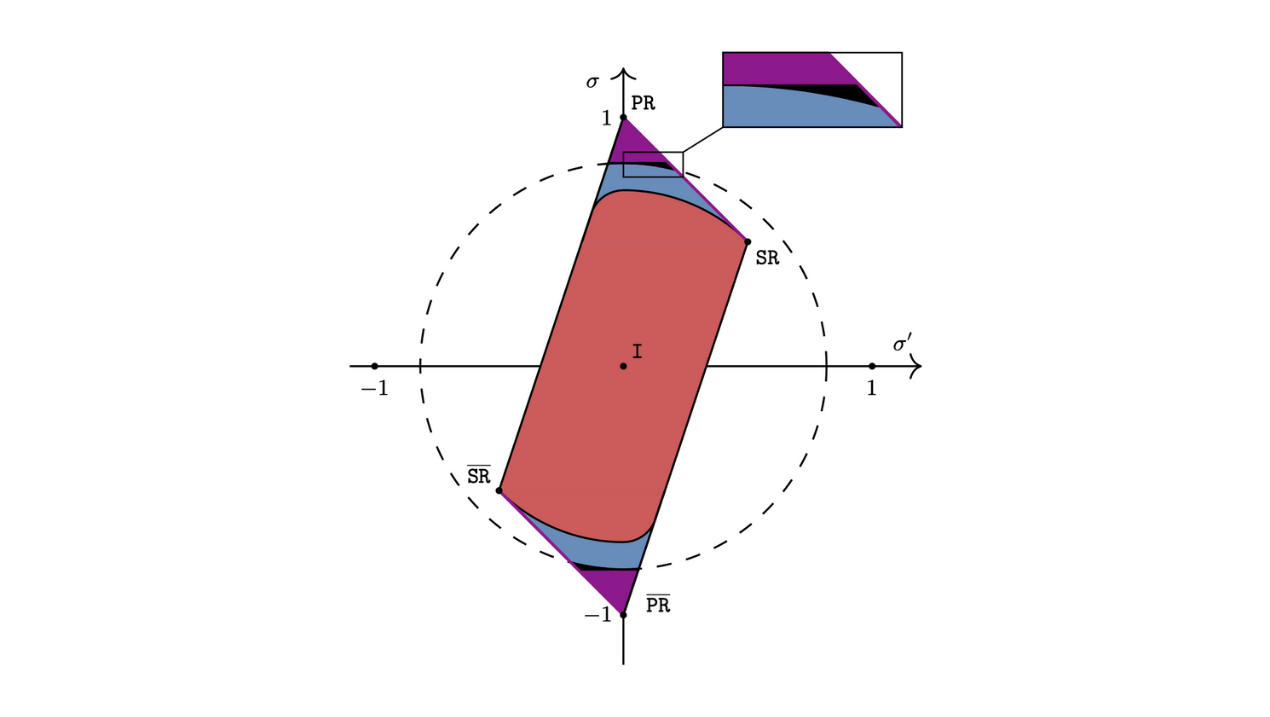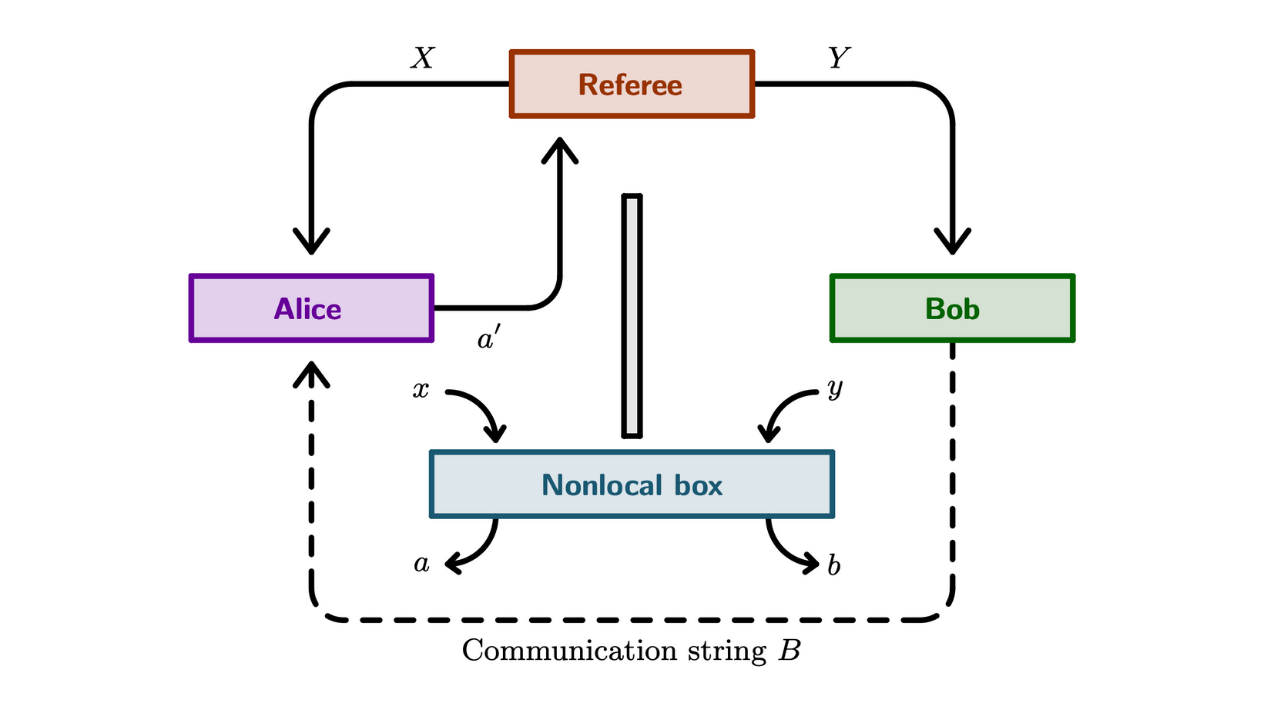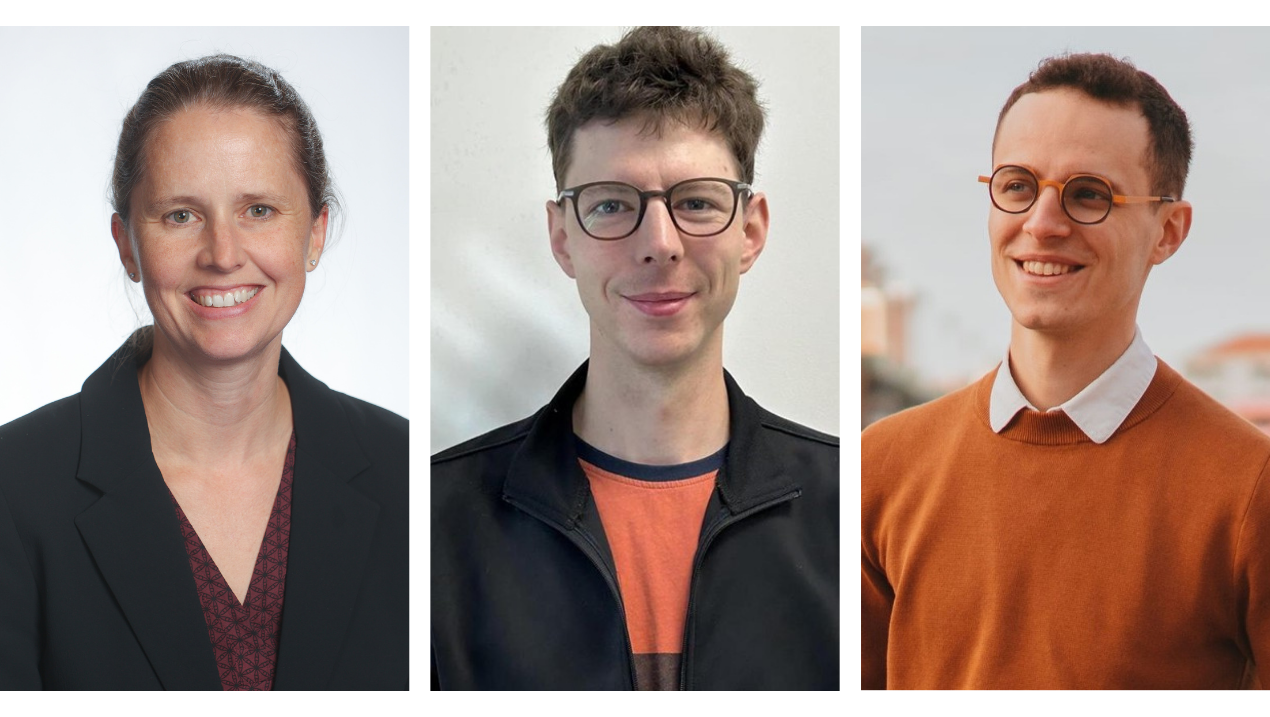Quantum entanglement, once dismissed as “spooky action at a distance” by Albert Einstein, is now a well-established phenomenon. It describes how two subatomic particles can become so deeply connected that changing one instantly affects the other, even across billions of light-years. Though Einstein was skeptical, decades of experiments have confirmed this phenomenon, leading us to a deeper understanding of the building blocks of our universe.

Still, quantum entanglement has its limits. Known as Tsirelson’s bound, this limit defines the maximum strength of correlations between entangled particles. Quantum mechanics allows for correlations that are stronger than anything classical physics predicts, but even these correlations have an upper threshold.
But what if even stronger correlations were possible? Professor Anne Broadbent is exploring this bold question. Working with Pierre Botteron, a PhD student at the University of Toulouse, and Marc-Olivier Proulx, a uOttawa master’s graduate, Professor Broadbent is investigating nonlocal boxes—theoretical tools to push beyond the limits of quantum mechanics.
“Nonlocal boxes examine the very foundations of physics,” says Professor Broadbent. “They prompt us to envision a realm beyond quantum mechanics, asking what principles would govern this new frontier. It’s a journey into uncharted territory, where we question the very fabric of reality and seek to redefine our understanding of the universe.”

Their groundbreaking research, published in Physical Review Letters under the title “Extending the Known Region of Nonlocal Boxes that Collapse Communication Complexity,” challenges the very foundations of quantum mechanics, pushing the boundaries of established physics.
But how does this theoretical research translate into practical applications? By exploring nonlocal boxes, Professor Broadbent and her team are uncovering ways to reduce communication complexity. These insights could enhance network efficiency, improve the performance of distributed computing systems, and lead to faster, more powerful technologies in areas such as telecommunications and logistics.
This research is also a shining example of the power of international partnerships. Professor Broadbent and Pierre Botteron first connected in 2019 through a collaborative program between the University of Ottawa and the École Normale Supérieure (ENS) in Lyon, where Botteron was a student. Although his initial internship was cancelled due to the COVID-19 pandemic, Professor Broadbent helped facilitate an alternative placement in Toulouse and later welcomed Botteron to Ottawa for a second internship.
What began as a master’s thesis project has since evolved into a robust international partnership. Pierre Botteron is now pursuing a PhD at the University of Toulouse under the supervision of Ion Nechita and Clément Pellegrini, in collaboration with uOttawa. Their work has already produced new breakthroughs in communication complexity. The partnership has expanded to include Denis Rochette, a recent PhD graduate from Toulouse who is now a postdoctoral researcher at uOttawa. Together, they are advancing science through a lively exchange of ideas and inspiring a new generation of students. As Professor Broadbent notes, “It adds life to the lab and research group, opens up perspectives and introduces complementary expertise.”
The collaboration is funded by an NSERC Alliance International Catalyst Quantum grant and forms part of the Canada-France Quantum Alliance (CAFQA).
Both Marc-Olivier Proulx and Pierre Botteron have played pivotal roles in this research. Proulx’s early work on communication complexity sparked the project, while Botteron’s drive for international experience helped solidify the cross-border collaboration.
“It’s often underappreciated that international collaborations don't always start at the top,” ProfessorBroadbent notes. “It began with a master’s thesis.” Graduate students, she emphasizes, are often the ones laying the groundwork for breakthroughs. In this case, their curiosity and initiative sparked a lasting collaboration between Canada and France, which is reshaping our understanding of physics and the future of technology.
Read more:
